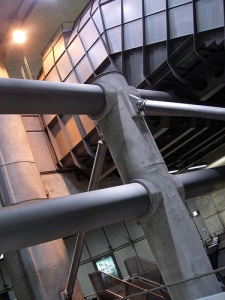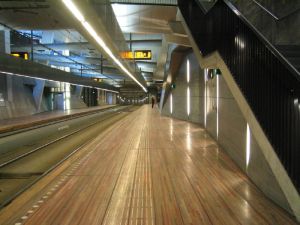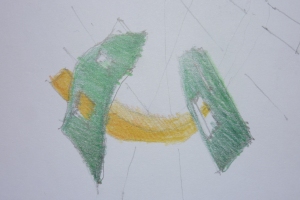/Presentation
Archive for octubre 2010
Group- Oana Bogdan, Max Rohm, Max Zolkwer
19/10/2010Proyecto BA(M) Grupo 3 Juan Lucas Young
16/10/2010Researching
Manifiesto
Presentación
Leo Van Broeck’s Group
12/10/2010Propuesta Oana Bogdan, Max Rohm, Max Zolkwer
05/10/2010
LCJ . Cátedra Lestard Cajide Janches
05/10/2010Publicamos el flyer y LCJ . TALLER DE ARQUITECTURA: WORKSHOP SUBA-FAUP 2010#links#links
Propuesta: Leo Van Broeck, Javier Rivarola y Fabian De la Fuente
03/10/2010 INTRODUCCION
INTRODUCCION
El espacio público, sea dentro o fuera de grandes edificios y/o infrastructuras públicas,tiene el gran potencial de provocar cambios significativos.
El espacio público puede crearse a partir de parques y plazas, así como de las infrastructuras públicas como puentes, techos, escalinatas y elevadores, paradas de colectivos,estaciones de tren, semicubiertos, kioskos, etc. Asimismo puede ser generado también por edificios de gran escala. Estos pueden conformar o definir espacios tales como claustros, patios cubiertos y descubiertos o jardines internos a un volumen construido.
Pueden también elevar al cielo el espacio público en el remate de una torre o extenderlo como un puente sobre un río.En ciudades donde las autoridades locales no cuentan con grandes presupuestos a su disposición, puede ser interesante realizar pequeñas y medianas intervenciones, que sean inteligentes y factibles y aún así tener un impacto real en el espacio público, aumentando su calidad espacial y posible utilización. A modo de ejemplo podemos citar el concurso de ideas realizado en Bucarest denominado “pequeñas ideas para unagran ciudad” (http://www.arhitectura1906.ro/votare.php?mod=form)
En algún momento el agua del Riachuelo será purificado (http://www.youtube.com/watch?v=0cVvrpJ7tu8 ). Sin embargo el diseño urbano y la
planificación urbana no necesitan esperar a que esto suceda. Estas disciplinas pueden desarrollar en forma paralela ideas y proyectos que conviertan la realidad del río en atractores verdes con costas públicas, puentes multifuncionales, infrastructura para deportes acuaticos, viviendas a lo largo de la costa, parques lineales, reservas naturfales,etc. Buenos Aires tiene falta de espacios verdes. Existe una necesidad de parques públicos.Quizas también, mas reservas ecológicas puedan ser introducidas como una manera de coser y mezclar la trama urbana con estructuras fractales de naturaleza ¨sin el hombre¨.Una respuesta a esta necesidad es un ingediente posible para generar soluciones a lolargo de este ¨sistema de bordes¨.Como agregado a esta problemática, se podría decir que el sistema General Paz – Riachuelo puede ser vista como un ¨rosario¨de subcentros de transferencias con escasa conectividad entre ambas márgenes que no se comportan como lugares de encuentro
sino mas bien tienen un efecto de aumentar la sensacion de límite y separación. Estos nodos estan interconectados por tierras fiscales o en estado de desconsolidación y costas contaminadas que refuerzan el efecto sistemas separados.Los nodos de transferencia, especialmente en la Gral. Paz son de caracter informal y se han desarrollado sin planificacoin alguna, muchas veces de forma caótica. Podría decirsesin embargo que las areas verdes entre nodos representan una fuente potencial paraagregar calidad al sistema.
CELEBRANDO EL LIMITE – BAILANDO SOBRE EL BORDE
Estrategia:
Empezar desde las condicoines políticas y geográficas tal como son; aceptar el sistema Gral. Paz – Riachuelo como un borde entre la CABA y la periferia, pero……transformar el problema en solución. Repensar el borde, no como una linea demarcatoria sino como linea de costura, como un cierre relámpago. A la manera de las torres de la gran muralla china que se tansformaron en una secuencia de lugares para estar y habitar muy atractivos.
Transformar el ¨rosario¨ en una serie de lugartes de encuentro donde la gente ya nova solamente a bajarse de un colectivo para subirse a otro. La gente debería ir porque es un lugar agradable para estar y quedarse, porque es un lugar para hacer compras,practicar deportes, vivir, trabajar, practicar el ocio y encontarse con amigos. Estas nuevas centralidades funcionarán como atractores y tendran un efecto de linquear
ambos lados. Desarrollarán relaciones y conecciones que se extenderán hacia la periferia y la ciudad misma: ya no solamente transporte público sino parques lineales, nuevos puentes, eco-conductos , plazas públicas, etc.
El primer paso será definir enclaves potenciales para estas nuevas centralidades a lo largo del eje Gral Paz-Riachuelo. Asimismo, los grandes vacíos urbanos cerca del sistema de borde¨ pueden ser tomados en cuenta. Finalmente cada integrante eligirá uno de estos enclaves para desarrollarlo.
La principal herramienta no serán los ¨edificios ¨ sino la elección de la correcta combinación de tejido urbano, programa, espacio público e infrastuctura. Diseñar espacios públicoso infrastructuras públicas que produzcan uniones, conecciones o coagulaciones entre el afuera y el adentro. Diseñar espacios públicos o infrastructuras públicas que tengan un eco mas alla de lo inmediato. Será posible la costura mediante el recursode implementar pequeños elementos genéricos que broten por todas partes en los espacios públicos tanto dentro como fuera de la CABA?
Pueden los ¨puentes¨ (literales o espacios que tengan un efecto de cruce) ser más que simplemente puentes, pero también ser portadores de funciones, espacis publicos para quedarse, tener un uso mixto uniendo sistemas que funcionan a un nivel de gran espacio público?
En esta estrategia no pretendemos que las autoridades de turno produzcan milagros y modifiquen todo. Trabajamos lo mas posible dentro de las condiciones existentes tal como son.
Aceptamos el borde, Usamos el borde, miramos su problemática y calidades y aprovechamos cada oportunidad que encontramos para espejar el problema en su opuesto.Organizamos una fiesta en la muralla del castillo.
INTRODUCTION
Public space – outside or inside large buildings and public infrastructure – has the potential to provoke a meaningful change.Public space can be created on its own in parks, squares… but it is also genereated by public infrastructure like bridges, roofs, escalators and lifts, bus stops, train stations, other means of public transport, shelters,public kiosks, etc. Finally public space is also produced by large building projects. They can enclose or define spaces like large courtyards, covered squares or open gardens within a built volume, etc. They can raise public space up in the sky on top of towers or extend it as a bridge over a river.
In conditions where local authorities do not have large budgets at their disposal it can be interesting to use small and mid size interventions
that are clever, feasible and have a real impact on public space and enhance its spatial quality and possible usage. A relevant example is the
idea competition in Bucharest called «Idei mici pentru un oras mare»(Small ideas for a big city).
Proposals are shown here:
http://www.arhitectura1906.ro/votare.php?mod=form
Sometime in the future the Riachuelo water will be purified.
But maybe urban design and planning don’t have to wait for this to happen, they can develop in parallel idea’s and projects to change the
river into a green attractor with riverbanks, multifuntional inhabitable bridges, infrastructure for water sports, housing along the river, linear green parks and natural reserves, etc.
Buenos Aires lacks urban green spaces. There is need for parks and green. And maybe also urban natural reserves could be introduced as a way to stitch and mix urban tissue with fractal structures of real human-free nature. Answering to this need is possible ingredient to generate solutions along the «border-system».As a resume of the problem one could say that the Gral. Paz and Riachuelo system can be seen as a rosary of traffic nodes and scarce crossings that don’t unite people but that rather have a separating effect. These nodes are connected by no-mans land and polluted riverbanks, lements that only reinforce the separating effect of the system. The nodes mainly on Gral Paz are very informal and have developed in an uncontrolled and sometimes problematic way. A potential source of additional quality in the Gral. Paz area is the green between the nodes…
ASSIGNMENT: CELEBRATING THE EDGE – DANCING ON THE
BORDER
Strategy:
start from the political and geographical conditions as they are; accept the General Paz – Riachuelo system as a border between the Capital
Federal and the periphery, but… transform the problem into the solution.Rethink the border not as a separating line but as a stitching line,
like a zipper, like the towers of the Chinese wall transformed into a sequence of places to be, inhabitable and attractive. Transform the rosary into a series of appealing centers where people don’t go any more just to hop off one bus and hop on another. People should go there because it is nice to be and stay there, because they can shop there, relax in the park, do sports there, live there, work there, meet friends there, go to the movies, etc. These new centralities will function as attractors and will have a stitching effect on both sides. They will develop relations and connections that stretch out into the periphery and into the capital federal: not only public transport lines but linear parks, new bridges, eco-ducts, public squares, etc.
First step is to define potential locations for these new centralities along or near Gral. Paz and Riachuelo. Also large scale urban voids and
brownfields near the «border-system» can be taken into account. Finally each team can choose one of these locations to work on.
The main design tool is not «buildings» but the choice of the appropriatecombination of urban tissue, programme, public space and public
infrastructure. Design public spaces or public infrastructure that produce links, connections or coagulation between inner and outer areas. Design public spaces or public infrastructure that have an echo on larger distances. Is stitching possible by having recursive generic small elements that pop up everywhere in public space, as well inside the Capital Federal as outside? Can ‘bridges’ (literal or spaces that have a bridging effect) be more than just a bridge, but also carrier of functions, public space to stay in, mixed use linking systems that function on large scale public level?
In this strategy we don’t expect authorities to perform miracles and change everything. We work as much as possible within the given conditions
as they are. We accept the border, we Use the border, we look at its problems and qualities and take every opportunity we canfind to mirror the problem into its opposite. We organize a party on t he perimeter wall of the castle.





































